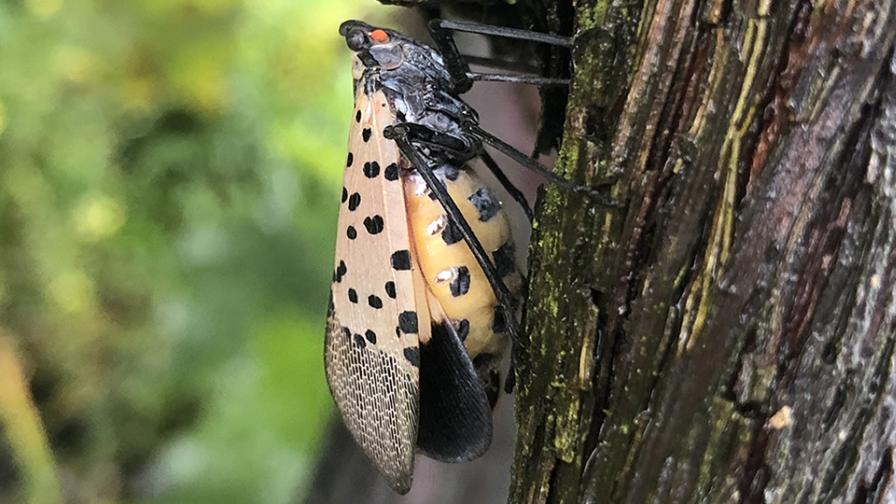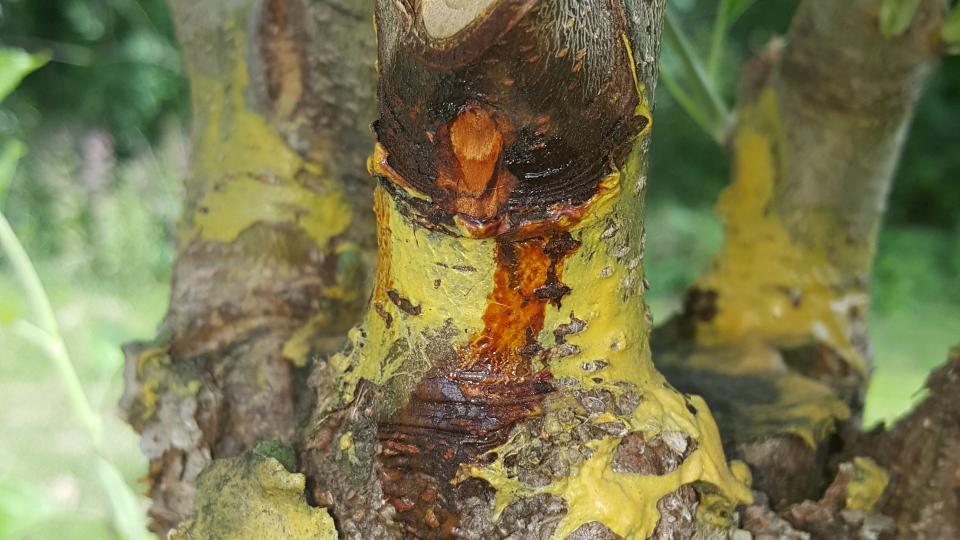BioSolutions 2023 Event To Shine Spotlight on Nasty Fruit and Nut Pests
Growers are often keenly interested in which pests can attack their crops and do serious economic damage. But as science marches on, we are discovering the “see it, spray it” method of dealing with fruit and nut pests — often featuring a harsh chemical as the baseline, which may not be available in the coming years — may not be the best way.
Three tree fruit/nut experts from around the country will be at the BioSolutionsSM Conference & Expo hosted by Meister Media Worldwide, parent company of American Fruit Grower, in late February to address how to handle some thorny pest problems. Here’s a brief look at the three talks that will be featured in the fruit breakout session at the eighth annual event.
Spotted Lanternfly – Surendra Dara, Oregon State University, Director, North Willamette Research and Extension Center
Invasion of alien pest species and their spread is becoming more common in the globalized world of trade and travel. The spotted lanternfly, which arrived in the U.S. in 2014, is both an agricultural pest threatening many cultivated crops and a nuisance in the urban and landscape environments. It is established in some states on the East Coast and is spreading to other areas.

Spotted lanternfly has now marched from the East Coast as far West as Indiana, and experts believe it is only a matter of time before it invades California and the state’s grapes, a favorite food.
Photo by Surendra Dara
Research shows that classical biological control, which plays a major role in addressing invasive pest problems, does not seem to be an option for the spotted lanternfly control due to the lack of specificity of the imported natural enemies that are being studied. Under these circumstances, IPM is the best strategy that not only explores various control options and regulatory approaches but also involves social aspects of public awareness and contribution in mitigating the spread of such pests.
States such as California are at risk because of the climatic suit-ability and availability of numerous cultivated and wild hosts of the spotted lanternfly throughout the state. While researchers continue to fine-tune IPM strategies, the ability of the public to recognize the pest and prevent its spread helps address this issue very effectively.
Fire Blight – David Strickland, Cornell University, Doctoral Student
Fire blight is a disease of apple and pear that — if left unchallenged — can swiftly destroy an orchard in a single growing season. Given that most apple cultivars grown in the U.S. are to some degree susceptible to fire blight, cultural practices and grower input (whether conventional or biological) are important for maintaining control of this disease. This presentation will provide information on the fundamentals of fire blight and its causal bacterium, Erwinia amylovora, as well as specific, actionable advice for growers regarding effective management of fire blight in their orchards.

A fire blight canker exuding ooze with bacteria is shown on this apple branch. (Photo by Srdjan Acimovic)
Cultural practices and the use of decision support systems will be discussed as well as both use of biological products alone (e.g., without support from antibiotics) and entwined with an IPM program taking advantage of conventional chemistries. In addition, the presentation will showcase alternative technologies being leveraged for improved fire blight management: namely suppression via ultraviolet treatments and the use of OMRI-listed plant growth regulators.
Walnut Pests – Jhalendra Rijal, University of California, Cooperative Extension Area IPM Advisor
California walnut growers are facing a multitude of issues that are affecting their crop production and profit margins. One of the components is pest management. Essentially, walnut growers are adopting IPM practices on their farms to effectively manage insect pests and diseases. Although the use of chemical pesticides is accepted as a part of the IPM, the primary emphasis has been given to implementing non-chemical pest control measures such as adopting cultural control use of bio-based practices that include biocontrol agents and biopesticides.
Understanding pest biology is a critical aspect of adopting IPM; however, knowing various types of biocontrol and biopesticides and their roles in pest management is even more critical. In this talk, we will discuss the success of bio-based options in managing important walnut pests such as walnut husk fly, spider mites, codling moth, and navel orangeworm. Recently, we worked to evaluate biological and microbial control agents in reducing the walnut husk fly population. We found that these microbial agents could be incorporated to reduce walnut husk fly populations over time.
Codling moth and navel orangeworm are the two major worm pests that can be managed effectively by combining various biopesticides and biology-based behavioral mating disruption techniques. Similarly, in-field biological control agents like predators and parasites are crucial in balancing pests such as mites and scale insects in walnut orchards, and the science-based information that helps promote these practices is essential. How farmers can incorporate multiple practices into the annual pest management program for healthy crop production will also be of discussion.










